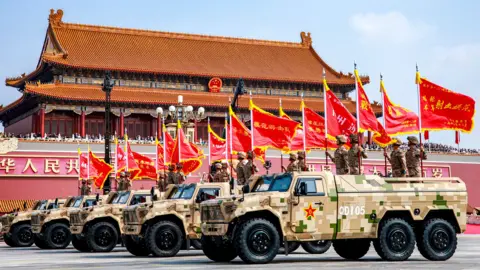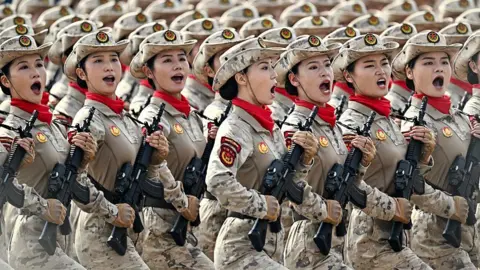China’s economy demonstrated remarkable resilience in the face of significant tariffs enacted by former President Trump, as it continued to grow at a steady pace this spring. Official figures reveal that China’s growth rate remains strong, as bolstered by hefty investments in factories and expansive infrastructure projects like high-speed rail systems, along with a surge in global exports. Leading into the year, buyers expected tariffs to be implemented, consequently increasing their orders during the first quarter, contributing to the economy's sustained vitality.
If the current growth trajectory persists, China’s economy could expand at an annual rate of approximately 4.1 percent, slightly below the growth levels seen earlier this year. The release of China's Gross Domestic Product (GDP) report coincided with assessments from the U.S. regarding inflation trends, highlighting the impact of tariffs on increasing consumer prices. Products heavily affected by tariffs, such as household furnishings, experienced notable price surges in June.
In a surprising shift, the Trump administration is permitting Chinese tech companies to resume purchasing Nvidia's A.I. chips, reversing a prior ban that had been in place for three months. However, complications arise as Beijing declares it will impose restrictions on the exportation of eight vital technologies related to manufacturing electric vehicle batteries. This move could present challenges for Chinese electric vehicle manufacturers aiming to establish operations abroad, as European Union nations have been encouraging such expansions.
Meanwhile, Australian Prime Minister Anthony Albanese's recent visit to China aimed to strengthen bilateral relations, though he faces growing pressure from the U.S. to align with its geopolitical strategies.
If the current growth trajectory persists, China’s economy could expand at an annual rate of approximately 4.1 percent, slightly below the growth levels seen earlier this year. The release of China's Gross Domestic Product (GDP) report coincided with assessments from the U.S. regarding inflation trends, highlighting the impact of tariffs on increasing consumer prices. Products heavily affected by tariffs, such as household furnishings, experienced notable price surges in June.
In a surprising shift, the Trump administration is permitting Chinese tech companies to resume purchasing Nvidia's A.I. chips, reversing a prior ban that had been in place for three months. However, complications arise as Beijing declares it will impose restrictions on the exportation of eight vital technologies related to manufacturing electric vehicle batteries. This move could present challenges for Chinese electric vehicle manufacturers aiming to establish operations abroad, as European Union nations have been encouraging such expansions.
Meanwhile, Australian Prime Minister Anthony Albanese's recent visit to China aimed to strengthen bilateral relations, though he faces growing pressure from the U.S. to align with its geopolitical strategies.























